The Goose Is Loose — How the Carl Gustaf Recoilless Rifle Changed the Game
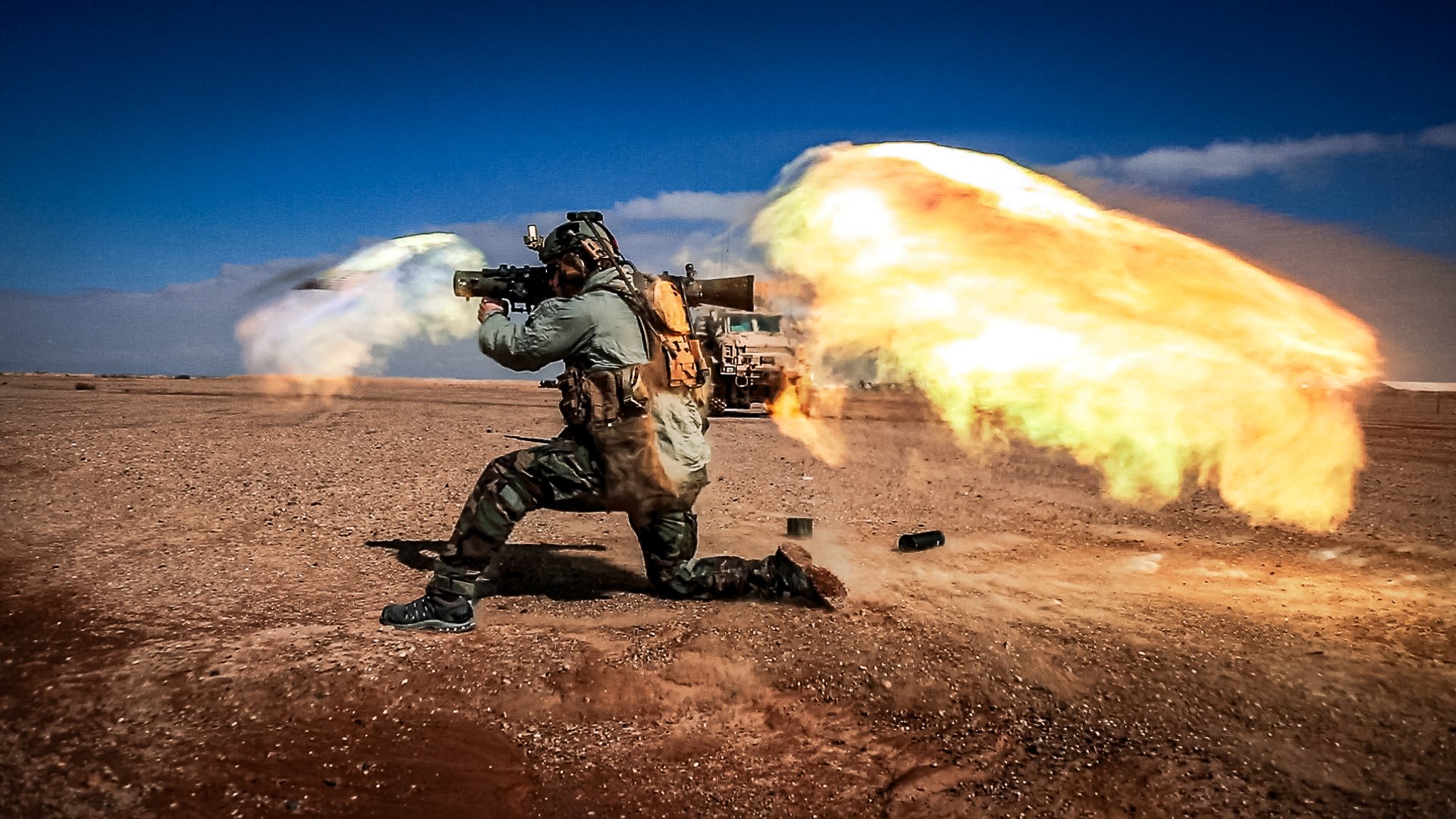
A coalition force member fires a Carl Gustaf recoilless rifle system during weapons practice on a range in Helmand province, Afghanistan, Feb. 16, 2013. US Army photo by Sgt. Benjamin Tuck.
It was 2013, in northern Afghanistan. The men of the 3rd Ranger Battalion were on a nighttime mission to eliminate a local Taliban commander holed up in a small village at the bottom of a valley.
Moving on foot, the Rangers came to the edge of a wadi and determined that the only way forward was to jump over it. (Bridges in the area were often rigged with improvised explosive devices.) Sgt. Wayne Capacillo, then on his fourth deployment to Afghanistan with the Rangers, watched through his night-vision goggles as some of his comrades leapt over the flowing water and landed, just barely, on the other side.
Capacillo knew that his chances of clearing the gap were slimmer than most. Assigned to his platoon’s anti-tank section, he carried a 20-pound Carl Gustaf 84mm recoilless rifle on his back. He also had an M4 assault rifle and a full combat load of 210 bullets, grenades, flash bangs, and two rounds of Gustaf ammo. The heavy load only made the prospect of being submerged in water even more unnerving.
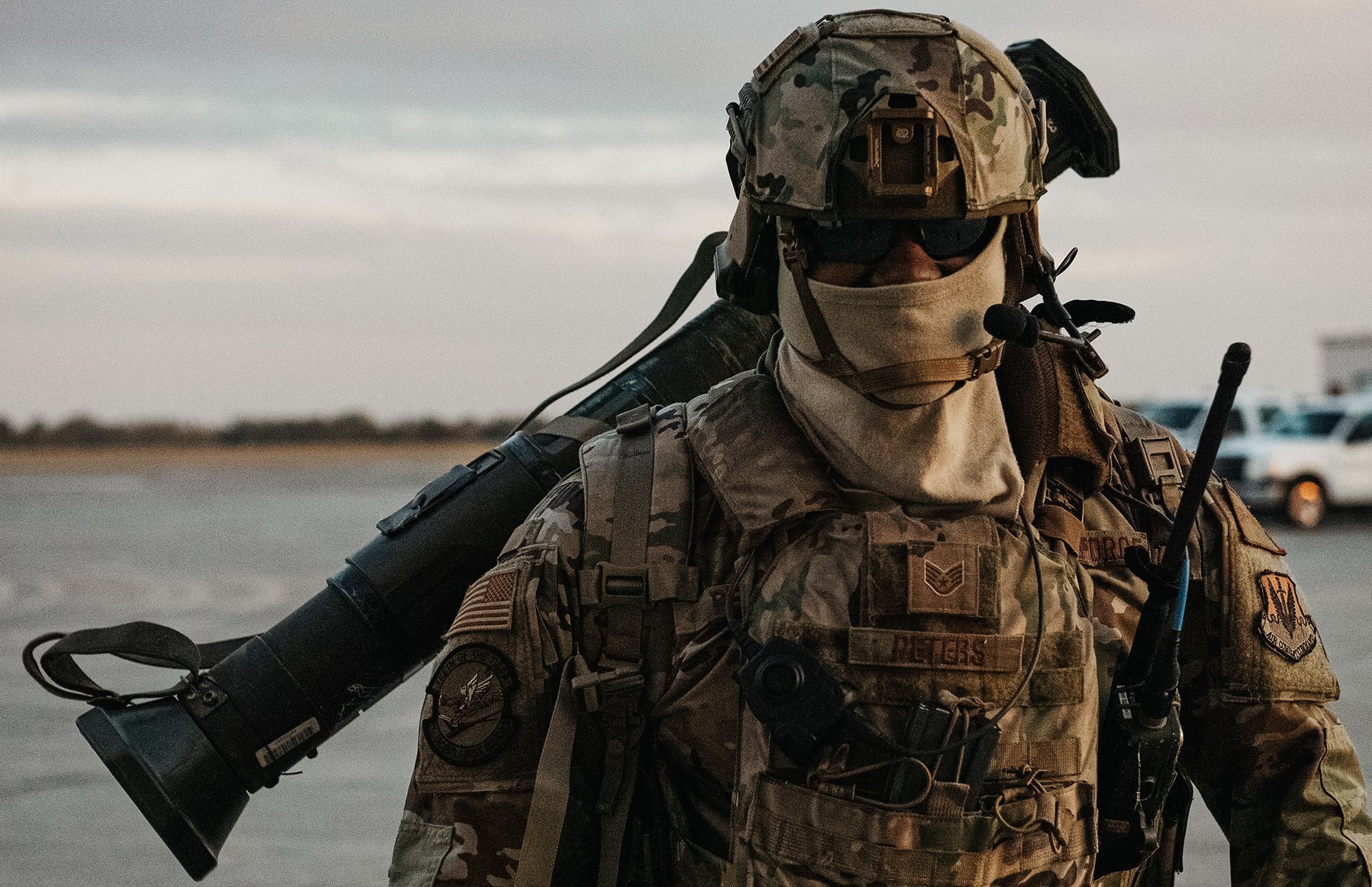
Staff Sgt. Manuel Peters, 23rd Security Forces Squadron standardization and evaluations evaluator, returns from a defensive fighting position during exercise Mosaic Tiger Feb. 23, 2021, at Avon Park Air Force Range, Florida. US Air Force photo by Staff Sgt. Carly E. Kavish.
When it was his turn, Capacillo took a running start, jumped, and, to his surprise, landed on solid ground. Then something struck the back of his head with a loud ping and he face-planted into the dirt. He laid there for a few moments, realizing that the Carl Gustaf on his back had nearly just knocked him out, as his teammates gathered around. “They were like, ‘Was that you pinging?’ and I was like, ‘Yeah, my skull is fucking rattled.’”
Hauling a Carl Gustaf recoilless rifle through the mountains of Afghanistan is no walk in the park. The weapon is cumbersome and conspicuous, and makes the person carrying it a more appealing target. And yet it’s a much bigger pain in the ass for the enemy. Deadly and versatile, the Carl Gustaf considerably amplifies the killing power of an infantry platoon, turning a lone soldier into a walking cannon who can level buildings as well as the playing field when up against a numerically superior force.
Related: Sua Sponte: The Fighting Spirit of the 75th Ranger Regiment
The Goose
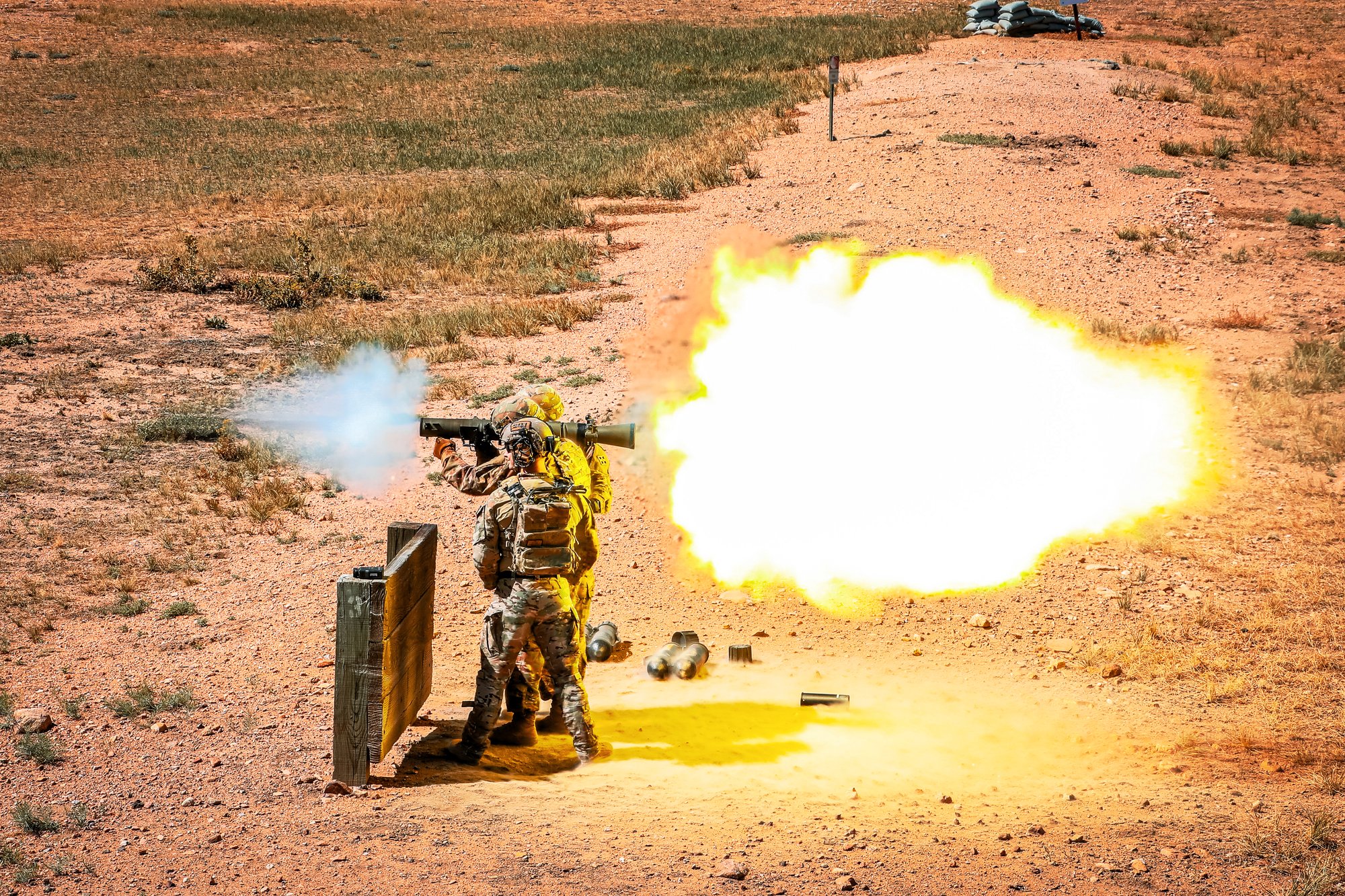
Sgt. Scott Herring, an infantryman assigned Bravo Company, 2nd Battalion, 12th Infantry Regiment, 2nd Infantry Brigade Combat Team, 4th Infantry Division, fires a Carl Gustaf recoilless rifle system, Sept. 13, 2019, during a qualification range at Fort Carson, Colorado. US Army photo by Staff Sgt. Neysa Canfield.
The Carl Gustaf 84mm recoilless rifle is a man-portable, shoulder-fired weapon system. The first models were designed in the 1940s by Swedish weapons manufacturer Carl Gustafs Stads Gevärsfaktori.
Carl Gustafs Stads Gevärsfaktori was founded in 1812, and produced firearms and munitions for the Swedish military throughout the 19th and 20th centuries. In 1999, the company was acquired by Saab AB. To date, according to the Saab’s website, Carl Gustaf recoilless rifles have been sold to the militaries of 40 different countries, including the US, Australia, and Canada.
The Carl Gustaf has garnered many nicknames over the years. The Australians call it the Charlie Swede; the Canadians call it the Carl-G; and the Americans call it the Goose. Among those militaries that have incorporated the Carl Gustaf into their arsenal, it is generally regarded as an indispensable weapon for frontline troops. Weighing between about 15 and 20 pounds, depending on whether it’s loaded (and the type of round), the rifle packs a considerably large punch for a weapon that can be carried and fired by a single dismounted soldier.
Historically, shoulder-fired rocket launchers, such as the M72 LAW used by American GIs in the Vietnam War, were one-shot weapons — meaning they could fire just one round and then had to be discarded. That is not the case with the Carl Gustaf, which can be fired as many times as there are rounds available, allowing its operator to engage multiple targets and adjust fire if necessary. It is also compatible with a number of different sights and advanced fire control devices.
Related: How the Bazooka Gained Infamy as a Tank-Buster
The Goose Is Loose
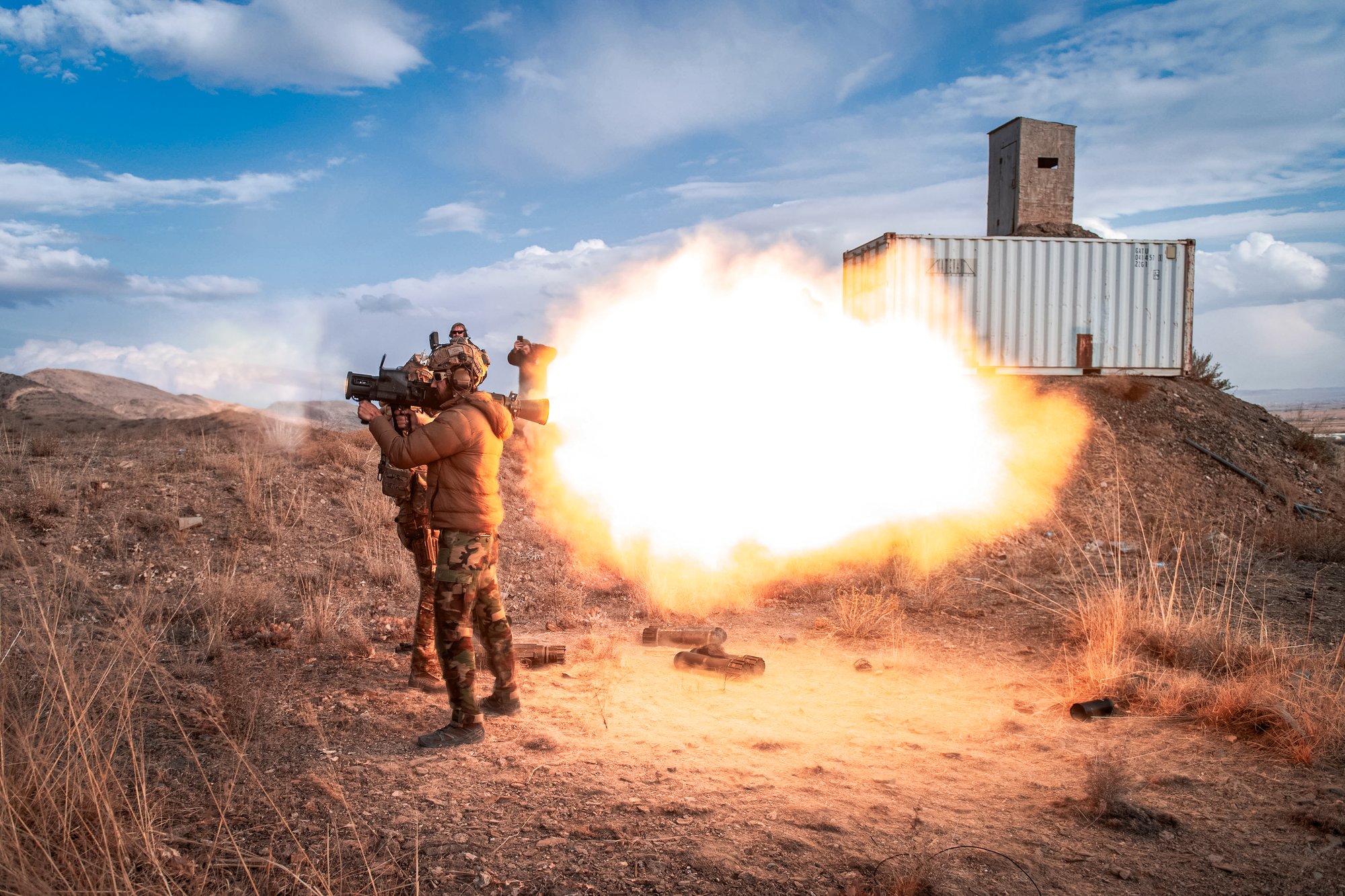
A US Army soldier fires a Carl Gustaf recoilless rifle during training at an undisclosed location, Nov. 14, 2019. US Army photo by Staff Sgt. Alex Manne.
American special operations forces have used the Carl Gustaf 84mm recoilless rifle since 1989. Among the first units to use the weapon was the 75th Ranger Regiment. Soon after, US Special Operations Command began fielding it to other SOCOM units, including Navy SEALs and Green Berets. As they typically operate in small teams, and sometimes beyond the reach of fire support, such units could make good use of a man-portable weapon that can blow up a tank or penetrate a bunker.
Furthermore, because of its relatively light weight and compact size, the Carl Gustaf is well suited for airborne operations. A commando can carry the weapon rigged to the side of their body when performing static-line or high-altitude high-opening (HAHO) jumps. It can also be transported inside a military tandem tethered bundle — a massive barrel-shaped container that is dropped from an airplane hitched to a lone paratrooper.
Eventually, the Goose made its way to conventional infantry units. By the time the Global War on Terror got underway, the weapon had been widely disseminated throughout the ranks and would be used extensively in Iraq and Afghanistan.
Related: Tiger Stripe Camo: The Uniform Immortalized by SOF in Vietnam
Versatile Munitions
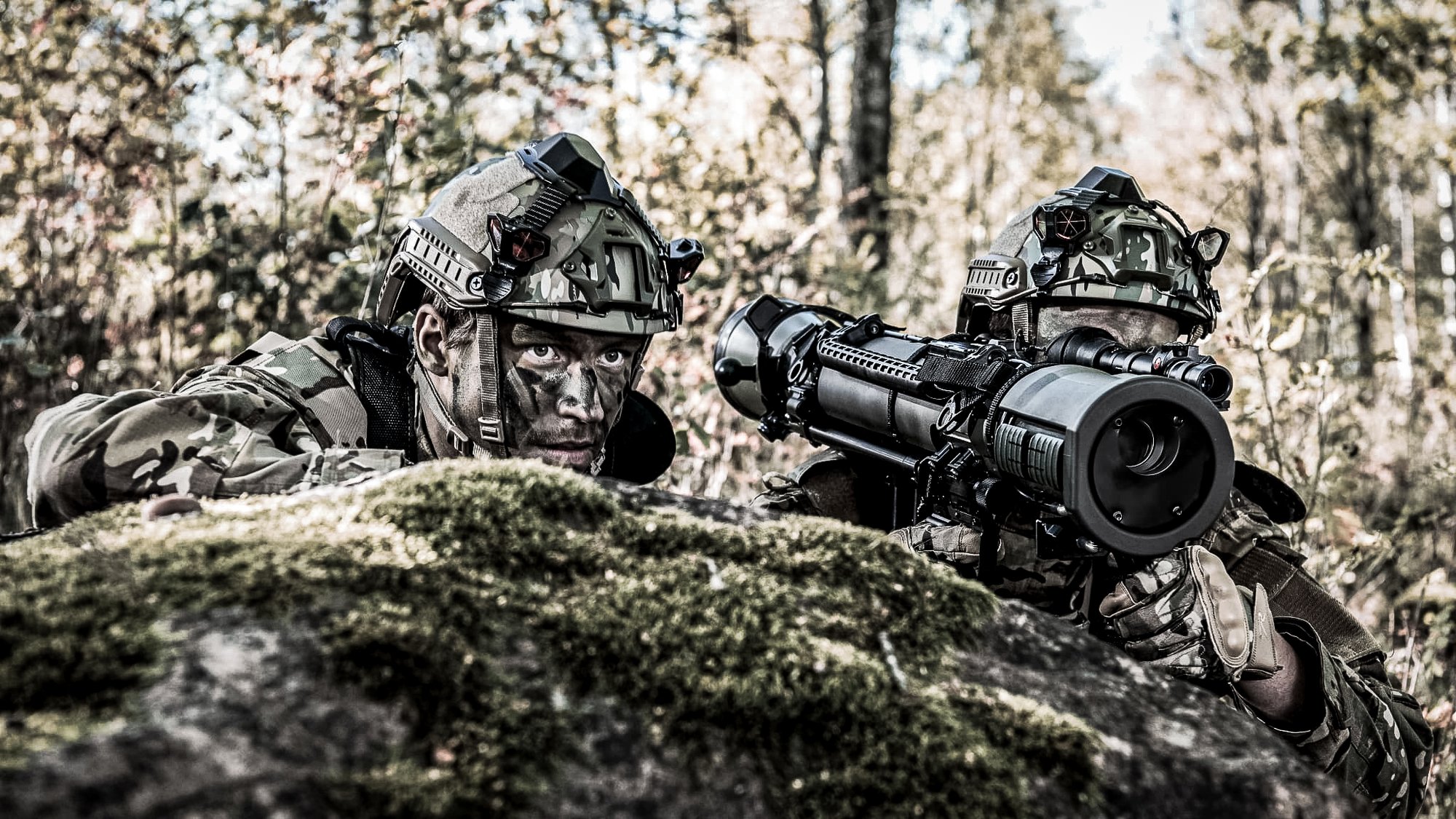
The 84mm rounds fired by the Carl Gustaf are special-purpose rounds designed for anti-structure, anti-armor, and anti-personnel purposes. Photo courtesy of Saab.
The Carl Gustaf is typically operated by a two-person team. There’s a gunner, who fires the weapon and also carries it on their back, and an assistant gunner, who holds additional rounds and is responsible for reloading the weapon. A well-trained Carl Gustaf rifle team can fire up to six rounds per minute.
The effective range of the Carl Gustaf varies between 100 meters and 2,500 meters, depending on the type of projectile it fires. Currently, there are 10 different available options, ranging from smoke and illumination rounds to high explosives. Included in the high explosives category are special-purpose rounds designed for anti-structure, anti-armor, and anti-personnel purposes.
The ADM 401, for example, is equipped with a warhead meant to be fired at dismounted personnel or soft-skinned vehicles. With an effective range of 100 meters when fired from the Carl Gustaf, the round explodes just before impact to shower its target with a cluster of tiny needle-like projectiles called flechettes.
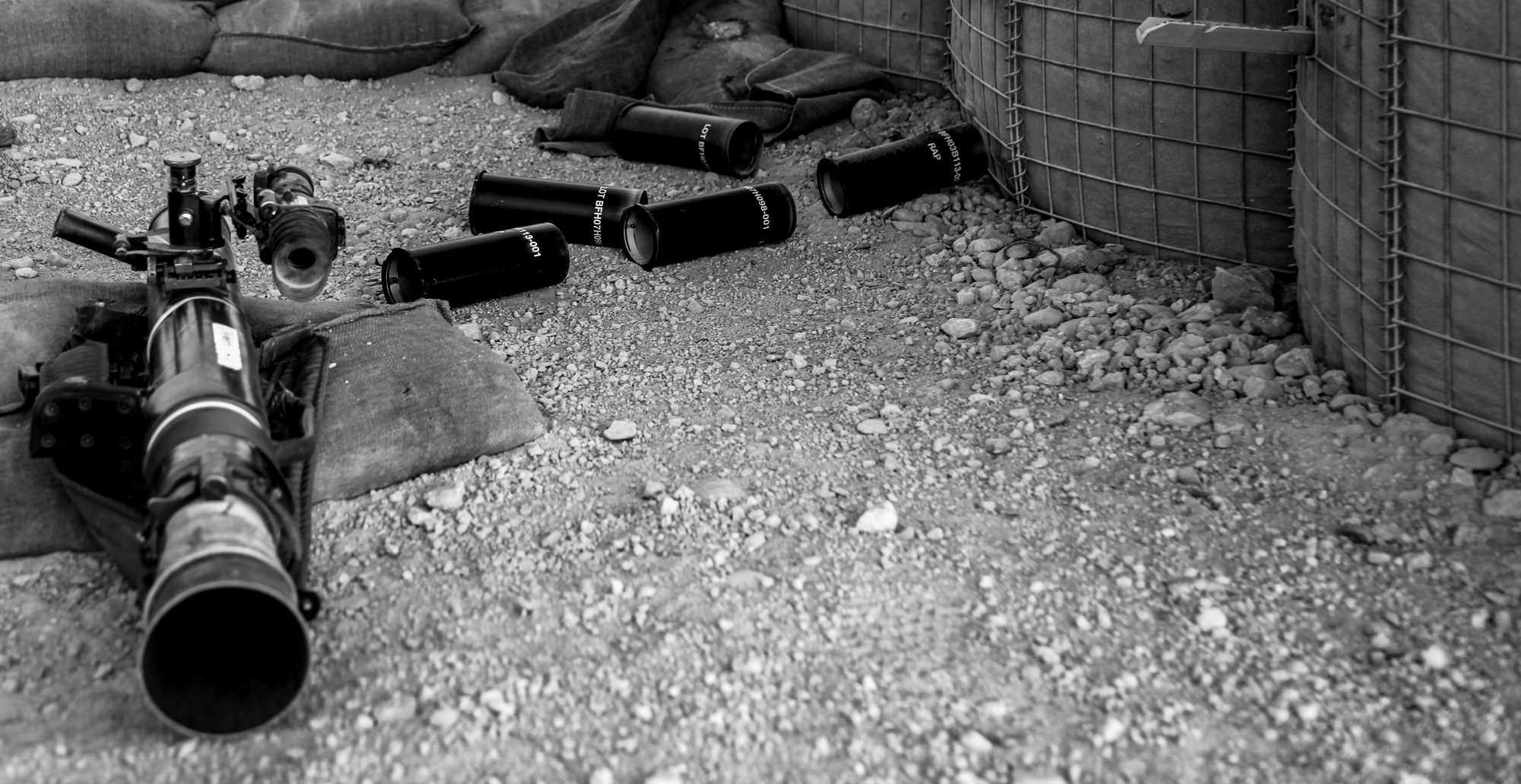
A Carl Gustaf rests next to spent 84mm high explosive rounds. Photo courtesy of Wayne Capacillo.
There is also the 84mm High Explosive Dual Purpose 502/502 RS round, which has a range of 500 meters and is designed to penetrate hard structures, such as brick-and-mortar buildings and bunkers. The round can be set to either impact or delay mode – meaning that it can be programmed to detonate either the moment it strikes the target or seconds afterward.
The warheads intended for use against armored vehicles and tanks have an effective range of between 300 meters and 700 meters. These include the HEAT 751, which, according to Saab AB’s website, “neutralizes explosive reactive armor (ERA) tiles fitted to a target, then initiates the HEAT warhead to penetrate the target's main armor.”
The US Army is expected to begin fielding another munition for the Carl Gustaf in 2024 – the HE 441E Programmable Round. When chambered, the HE 441E can be programmed to either detonate in an airburst or upon impact.
Read Next: Why Troops Still Love The M60 ‘Pig’ After More Than 60 Years

Matt Fratus is a history staff writer for Coffee or Die. He prides himself on uncovering the most fascinating tales of history by sharing them through any means of engaging storytelling. He writes for his micro-blog @LateNightHistory on Instagram, where he shares the story behind the image. He is also the host of the Late Night History podcast. When not writing about history, Matt enjoys volunteering for One More Wave and rooting for Boston sports teams.
BRCC and Bad Moon Print Press team up for an exclusive, limited-edition T-shirt design!
BRCC partners with Team Room Design for an exclusive T-shirt release!
Thirty Seconds Out has partnered with BRCC for an exclusive shirt design invoking the God of Winter.
Lucas O'Hara of Grizzly Forge has teamed up with BRCC for a badass, exclusive Shirt Club T-shirt design featuring his most popular knife and tiomahawk.
Coffee or Die sits down with one of the graphic designers behind Black Rifle Coffee's signature look and vibe.
Biden will award the Medal of Honor to a Vietnam War Army helicopter pilot who risked his life to save a reconnaissance team from almost certain death.
Ever wonder how much Jack Mandaville would f*ck sh*t up if he went back in time? The American Revolution didn't even see him coming.
A nearly 200-year-old West Point time capsule that at first appeared to yield little more than dust contains hidden treasure, the US Military Academy said.












